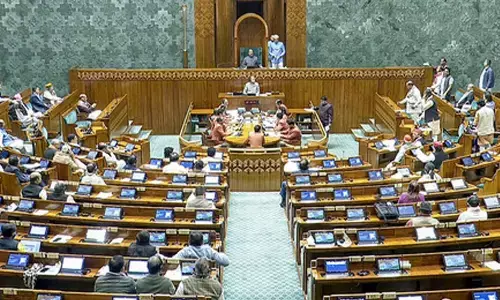Post-Budget 2022: Where you should invest to beat mkt volatility

Post-Budget 2022: Where you should invest to beat mkt volatility
A staggered investment over the next few quarters with a four-year horizon on the medium to higher end of the curve could prove profitable
The recent budget announcement has put forth clarity over the expectations into the coming financial year. The budget has remained consistent and continued the previous work of the past few years. There were neither great new announcements nor any negative surprises and it stuck to the theme of development at large while making investments to the future.
While I've always believed that one shouldn't make changes to their investment plans depending upon this annual ritual, this time though, one could make some adjustments especially in their debt portfolios. Though the rising inflation is not endemic to India, the extent of the impact is not yet full glare like that of the west. The interventions by Indian government and the Reserve Bank of India (RBI) have been different from that of the west. While the western countries opted for higher fiscal spend combined with monetary easing, India wasn't having a luxury to overspend and so the fiscal front was limited. The monetary stance however has been very accommodative to the emerging challenges.
This cautious approach has enabled the economy to wither the storm containing the stress in the economy even as the recovery has been not complete. The surprise rebound in the tax revenues this financial year has helped the govt. manage the fiscal better than their own anticipation and budgeted levels.
The market (debt) participants expected the improved revenues to shrink the current year's fiscal deficit to lower in the revised estimates. On the contrary the govt retained the deficit numbers unaltered leaving room for higher spend for the remaining period of the year till March. That means, the govt must have a higher spending run rate than the last three quarters. This seemed a stretch considering the state govt's inability to completely mobilize their spending due to the pandemic shocks, which could mean a better standing on the actuals once the period is over. That could retain an additional surplus into the coming fiscal.
The era of pliable monetary policy is over and the wish of inflation came back harsher than the economies are prepared for. The supply chain disruptions have turned relentless and the uneven infection waves are further adding woes to the turn to normalcy. The US Federal Reserve (Fed) in its recent policy review has clearly stated its intent to tighten not just the liquidity but also to hike the interest rates this calendar year. The expectations range from 3 rate hikes to up to 7 hikes which could change the years which will have repercussions across the globe and particularly on the emerging market economies.
The new budget estimates have projected conservative expectation upon revenues and on the expenditure too. May be the govt. was planning to retain some dry powder in case of any pandemic related health exigencies into the coming year. The concern among the market participants has been due to the less docile monetary environment into the coming year. Also, from the domestic market capacity, the debt funding (borrowing) seems to have reached the brim of sustainability.
The conservative figures of the next fiscal are further compounded due to the lowered expectation of the nominal growth which is contrary to their very own economic survey report. One thing is clear from the govt's intent, growth has taken the driver's seat than fiscal consolidation in the last couple of years. Though the capex is great motivator from the sentiment perspective, the borrowing stats are a concerning factor for bond markets.
So, debt investors are better off staying in the short end of the yield curve and floating interest rate funds could discount part of the rate hikes, if not completely. Conversely, higher money could be made when a sector or asset is under stress. Of course, the journey would be very volatile and so is the staggered strategy to counter it.
(The author is a co-founder of 'Wealocity,' a wealth management firm and could be reached at [email protected])













